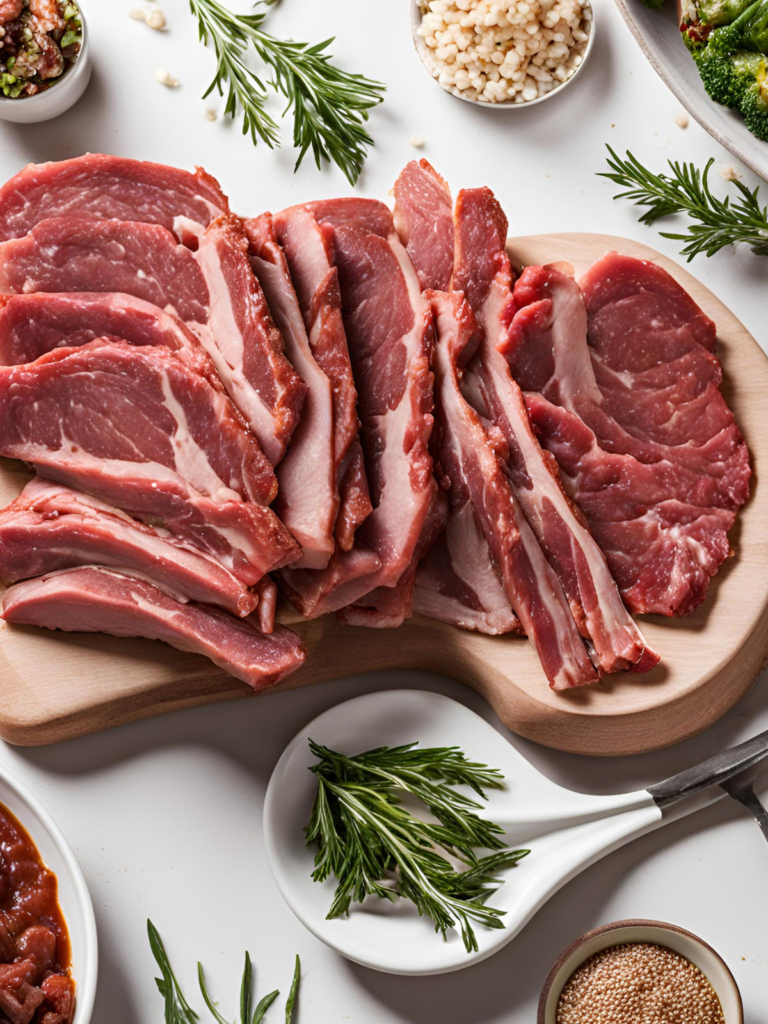What is the best meat to eat?
Introduction
Like finding the ideal ice cream flavour, the finest meat relies on your taste and requirements. There are more than personal preferences to consider while choosing beef. Ethics, nutrition, sustainability, and health are important. So, let’s go into the specifics and discover your ideal meat.
What is the best meat to eat? Considerations for Health
When considering meat, health is typically paramount. Protein, vitamins, and minerals are abundant in meat. But not all meats are equal. Some are lean and nutritious, while others are heavy in fat.
Nutritional Advantages
Meat contains protein, lipids, vitamins (including B12), iron, and zinc. Iron helps oxygenate the blood, while protein builds and repairs muscles. B12 vitamins are essential for brain and energy function.
Protein Content
Most meats are high in protein. Chicken breast and lean beef are high in protein, which is essential for muscle building and a healthy diet.
Fat Types and Content
Meat fat varies greatly. Some meats, including beef and hog, are rich in saturated fats, whereas chicken and fish are lower in harmful fats and higher in omega-3s.
Beef
Beef—a perennial favourite. Many diets include beef, from juicy steaks to hearty roasts.
A variety of cuts and their uses
There are many cuts of beef for different cooking methods. Ribeye grills well, whereas brisket slow-cooks.
Nutritional Profile
Iron, vitamin B12, and protein are abundant in beef. In fattier slices, it may be heavy in saturated fat.
Health Benefits and Issues
While beef is healthy, pick lean cuts to reduce saturated fat. Moderation is crucial since too much red meat may cause heart disease and other health risks.
Chicken
Chicken is a popular nutritious meat. Versatile, lean, and readily accessible.
Versatility in cooking
Grill, bake, roast, or sauté chicken. Its mild flavour makes it a perfect salad and stew basis.
Nutritional Profile
Chicken breast has minimal fat and high protein. It’s also an excellent source of niacin and selenium.
Health Benefits and Issues
Chicken is often lower in fat compared to red meat, making it a heart-healthy option. However, it’s vital to look out for processed chicken items, which may be rich in salt and preservatives.
Pork
Pork may not be as popular as beef or chicken, but it’s still a favorite for many, particularly in barbecue and holiday meals.
Popular Cuts
Common slices of pork include tenderloin, chops, and shoulder. Each has its unique flavor and cooking method.
Nutritional Profile
Thiamine, selenium, and zinc are found in pork, which is high in protein.
Health Benefits and Issues
Lean pork is good, while fattier slices are rich in saturated fat. Like beef, pork should be eaten moderately.
Lamb
The flavour of lamb is unique. It’s connected with holidays and celebratory banquets.
Flavour Profile Unique
Lamb’s deep, earthy flavour complements many herbs and spices. It’s popular in Mediterranean and Middle Eastern cooking.
Nutritional Profile
Iron, vitamin B12, and protein are abundant in lamb. It may also be heavy in saturated fat.
Health Benefits and Issues
Moderate consumption of lean lamb chops is beneficial. Trim extra fat before cooking since fat concentration varies.
Fish
Fish is considered one of the healthiest meats due to its omega-3 concentration.
Fish Types
Fish like salmon, tuna, and mackerel are popular. Each variety has its distinct flavour and nutritional advantages.
Nutritional Profile
Fish is rich in protein and low in saturated fat. Fatty fish, like salmon, are especially abundant in omega-3 fatty acids, which are helpful for heart health.
Health Benefits and Issues
Regular eating of fish helps lower the risk of heart disease, stroke, and other chronic illnesses. Tuna, for example, should be checked for mercury.
Game meats
Game foods are becoming more popular as consumers seek eco-friendly solutions.
Bison, rabbit, venison
Deer, bison, and rabbit are game foods. Domesticated animals have more fat than these meats.
Nutritional Profiles
Game meat is rich in protein and low in fat. They also include more nutrients.
Health Benefits and Issues
Healthy alternatives to typical meats include game. Some are more pricey and inaccessible.
Plant-Based Options
Plant-based meats are growing in popularity due to vegetarian and vegan diets.
The Rise of Plant-Based Meats
Plant-based brands like Beyond Meat and Impossible Foods replicate meat’s flavour and texture.
Comparison of Nutrition
Protein-rich plant-based meats have less saturated fat than conventional meats. But they may be heavy in salt and other chemicals.
Health Benefits and Issues
Those trying to cut less on meat may benefit from plant-based foods. You should pick items with natural components and little processing.
Impact on Environment
Growing concerns surround beef production’s environmental effect.
Sustainability of Meat Production
Beef production has a big environmental impact. It uses a lot of water, land, and feed and emits greenhouse gases.
Comparing Environmental Footprints
Beef and lamb are more environmentally damaging than fish and fowl. Plant-based products are frequently the smallest.
Ethical meat eating is vital.
Animal Welfare
Concerns regarding animal welfare affect meat preferences. Meat from humanely reared animals may be more ethical.
The Ethics of Farming
Sustainable and ethical farms improve animal welfare and the environment.
Economic factors
Meat prices vary widely.
Meat Cost Comparisons
Lamb and beef cost more than chicken and pig. Fish costs vary significantly by kind and source.
Accessibility and affordability
Chicken is the cheapest and most available meat, thus many families choose it.
Culture Preferences
Culture influences meat choices.
Meat Options Worldwide
Cultures have distinct staple meats. Many Asian meals use pig, whereas Middle Eastern ones use lamb.
Culture affects meat preference
Cultural preferences and tastes strongly impact meat selection and preparation.
Techniques for cooking
How you prepare meat affects its flavour and nutrients.
Best Meat Cooking Methods
Popular ways include grilling, roasting, baking, and slow-cooking. Each method produces diverse flavours and textures.
Enhancing Taste and Nutrition
Herbs, spices, and marinades improve meat flavour and nutrients.
Conclude
The finest meat to eat? Your health objectives, ethics, surroundings, and preferences determine it. Lean beef and pig may support a balanced diet, although chicken and fish are usually best. Interesting and healthful choices include game meats and plant-based alternatives. Balance and mindfulness are crucial, regardless of your decision.
FAQs
The healthiest meat to eat?
Due to their high protein and low saturated fat content, chicken breast and fish, especially salmon, are healthy.
Red meat—bad for you?
Red meat may be healthful if eaten in moderation and lean slices. Red meat overconsumption may cause heart disease.
Can you eat meat daily?
Yes, but a balanced diet requires a variety of lean, unprocessed meats.
Which meat replacements are best?
Tofu, tempeh, lentils, chickpeas, Beyond Meat, and Impossible Foods are popular meat replacements.
How does eating beef affect the environment?
Due to high water, land, and greenhouse gas emissions, beef production has a major environmental effect. Plant-based alternative footprints are smaller.


